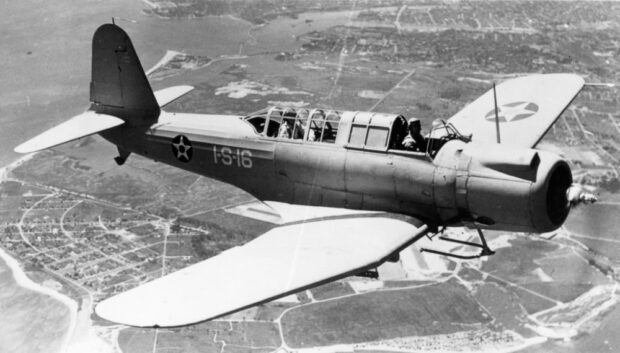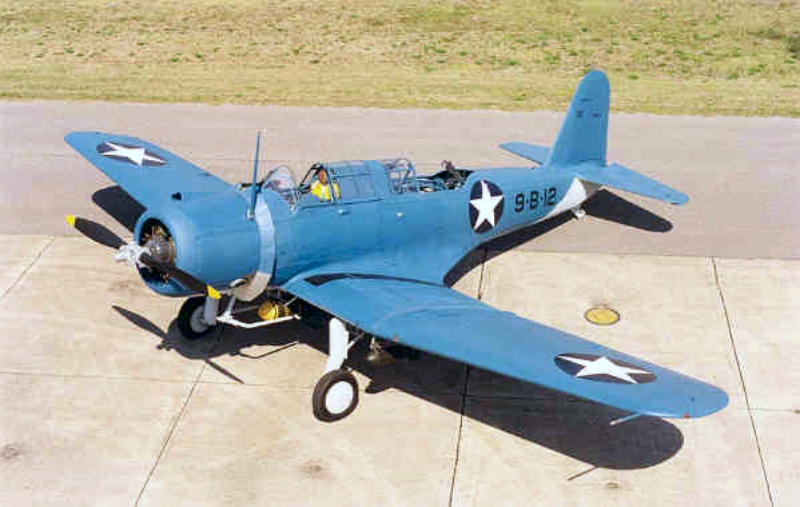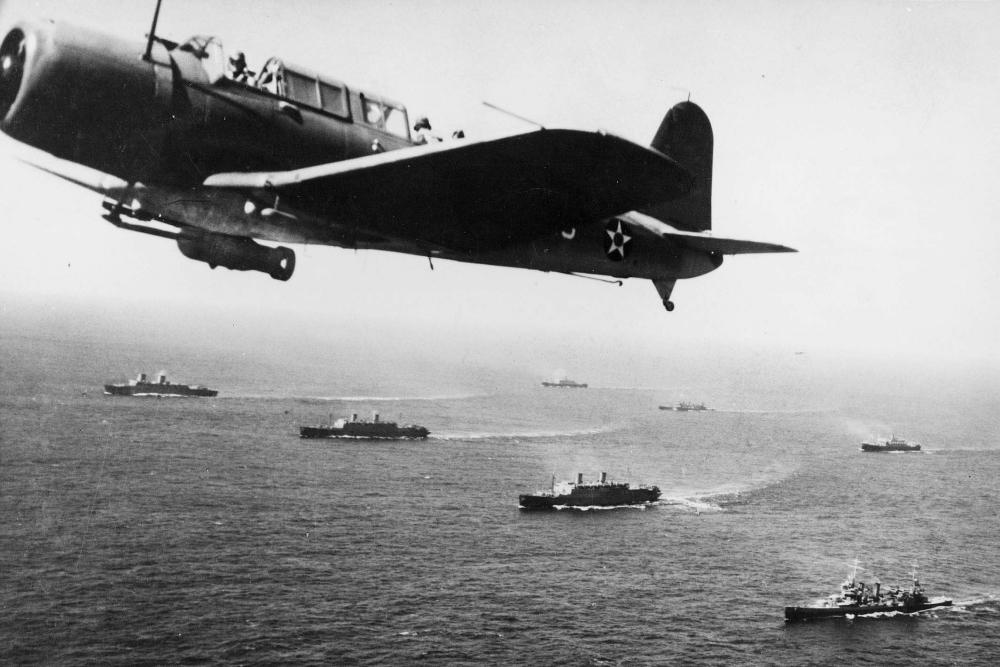The SB2U Vindicator arrived at a time of evolving technology and tactics for US Naval aircraft. Torpedoes were still considered a highly lethal weapon against large ships, but the concept of dive bombing was readily being explored, and indeed was deemed to be more effective than torpedo bombing in many situations.
The Vindicator was the first monoplane dive bomber put in service by the US Navy. It entered service in the mid-1930s but would not see action until the battle of Midway in 1942, by then it was hopelessly outclassed by more modern US dive bombers like the TBD and SBD. This was due to the ‘old school’ method of its construction, a blend of fabric covered trusses and aluminium sheeting. However, the Vindicator filled a vital gap in the US Navy’s inventory whilst more advanced designs were worked on.
Design and development
In 1934, the United States Navy issued a requirement for a new Scout Bomber for carrier use, and received proposals from six manufacturers. The specification was issued in two parts, one for a monoplane, and one for a biplane. Vought submitted designs in both categories, which would become the XSB2U-1 and XSB3U-1 respectively. The biplane was considered alongside the monoplane design as a “hedge” against the U.S. Navy’s reluctance to pursue the modern configuration.
The XSB2U-1 was of conventional low-wing monoplane configuration with a retractable conventional tailwheel landing gear, the pilot and tail gunner being seated in tandem under a long greenhouse-style canopy. The fuselage was of steel tube construction, covered with aluminum panels from the nose to the rear cockpit with a fabric-covered rear fuselage, while the folding cantilever wing was of all-metal construction.
A Pratt & Whitney R-1535 Twin-Wasp Junior radial engine drove a two-blade constant-speed propeller, which was intended to act as a dive brake during a dive bombing attack. The use of propeller braking was not entirely successful, and in practice US Navy Vindicators lowered the aircraft’s undercarriage to act as a speed brake and dived at shallower angles.
A single 1,000 lb (450 kg) bomb could be carried on a swinging trapeze to allow it to clear the propeller in a steep dive, while further bombs could be carried under the wings to give a maximum bomb load of 1,500 lb (680 kg).
The SB2U was evaluated against the Brewster XSBA-1, Curtiss XSBC-3, Great Lakes XB2G-1, Grumman XSBF-1 and Northrop XBT-1. All but the Great Lakes and Grumman submissions were ordered into production. Designated XSB2U-1, one prototype was ordered on 15 October 1934 and was delivered on 15 April 1936.
Accepted for operational evaluation on 2 July 1936, the prototype XSB2U-1, BuNo 9725, crashed on 20 August 1936. Its successful completion of trials led to further orders, with 56 SB2U-1s ordered on 26 October 1936,[5] and a further 58 of a slightly modified version, the SB2U-2, on 6 October 1938.
The SB2U-3 was a more heavily modified version, intended as a long-range scout bomber, capable of being fitted with a conventional wheeled undercarriage, for operations from aircraft carriers or land airbases, or with floats. To give the required increased range, the fuselage fuel tank fitted to the SB2U-1 and -2 was supplemented by integral wing tanks, while the aircraft’s tail had an increased span.
The prototype XSB2U-3, converted from the last SB2U-1, flew in February 1939, and after testing as both a landplane and floatplane, 57 SB2U-3s were ordered on 25 September 1939, mainly for the US Marine Corps.
The SB2U is prominently featured in the 1941 film Dive Bomber.
There were 260 examples of all Vindicator variants produced, and a single example is preserved at the National Naval Aviation Museum at NAS Pensacola, Florida.
Sources: YouTube; Wikipedia



